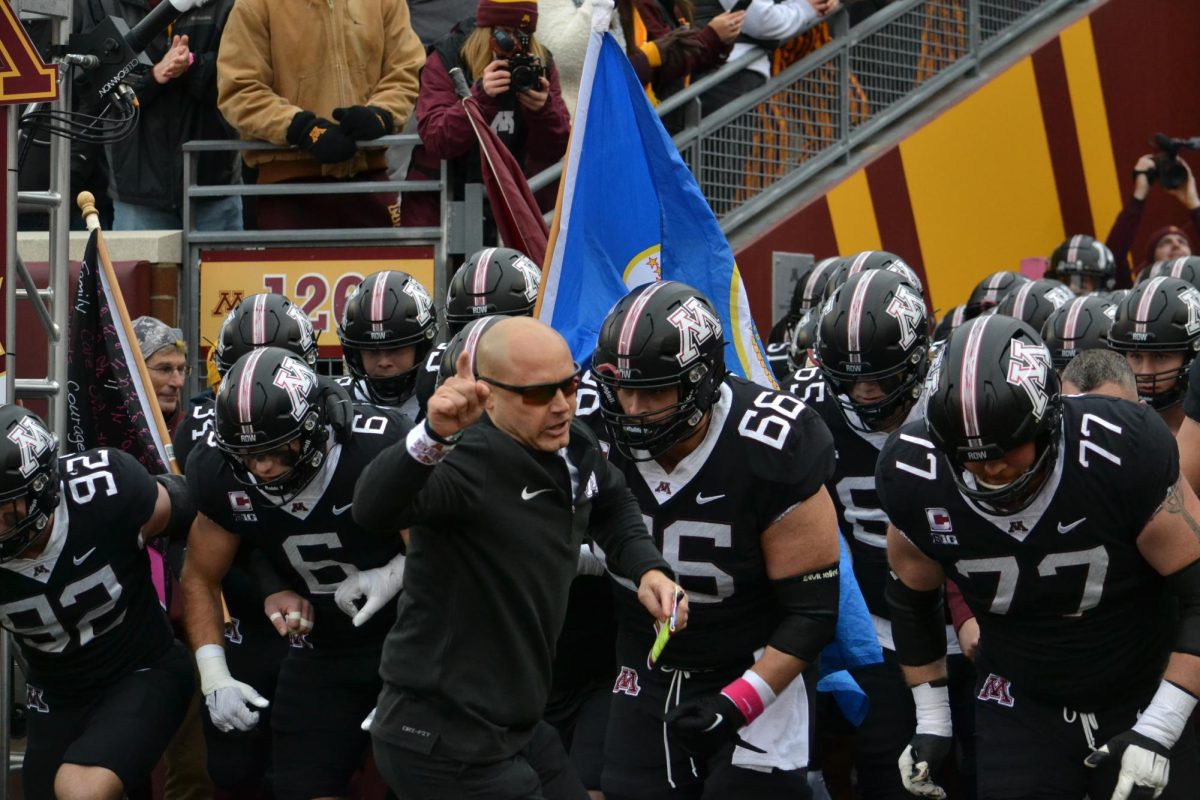The University of Minnesota is looking for ways to save money, and one way is by pulling money from the athletics department. In 2009-2010, the athletics department will see a $700,000 cut in University funding, which totaled $5.3 million in 2008-2009. Despite the cut, the total budget for the athletics department next year is expected to stay similar to the current $70 million . Athletics Director Joel Maturi said he expects the revenue from TCF Bank Stadium to soften the blow. But even the athletics department, which is close to being fiscally self-sufficient, is not immune from the budget problems facing the University. âÄúYou donâÄôt get where you need to get to by making easy decisions,âÄù he said. âÄúMy goal is to minimize the pain.âÄù Although none of the plans are set yet, Maturi said some of the cuts could affect recruiting and how teams travel. Maturi said the key is to find ways that do not prevent teams from being successful. But some universities havenâÄôt been so lucky, and some have resorted to cutting sports. The University of Minnesota-Crookston cut menâÄôs hockey on March 23, and other larger schools like Stanford University are considering similar measures. Maturi said cutting a sport is a last resort option, and he has not even considered it at this point. He said cutting sports would save a lot of money, but âÄúweâÄôre not at that stage yet thankfully.âÄù Cutting funding could potentially hurt teamsâÄô success, which would drop revenue even farther, Maturi said. To avoid this, the athletics department is looking for ways to save money on equipment and other spending that would still maximize teamâÄôs revenue. Athletics Chief Financial Officer Liz Eull said the athletics department is looking into ways to maintain a balanced budget for the 2010 fiscal year. The flat budget Eull is projecting will make budget issues a lot tighter because the expected increase in tuition will mean scholarship money will take up a greater percentage of the budget. She said a flat budget is virtually a cut because the cost of everything goes up year to year. âÄúWeâÄôre relying on directors and coaches to take a look at how theyâÄôre currently spending their money and make it go a little bit further next year,âÄù she said. Volleyball head coach Mike Hebert said he did not see any cuts take place during the 2008 season because the budget was predetermined in advance, but he said he expects to see some changes for the upcoming season. Hebert said Maturi has alerted him and other coaches that cuts will be made but has not mentioned any specifics. Maturi said teams might have to take buses instead of flying, which Hebert said could be detrimental to the teamâÄôs academics. âÄúOne of the reasons we fly is to get our kids back on campus to focus on academics,âÄù Hebert said. âÄúI donâÄôt see that changing.âÄù Under the current structure, the volleyball team plays a match Friday and then leaves to play in a different location Saturday. Hebert said flying allows the players to come back to campus and use Sundays to study. Another concern Hebert has is that fewer facilities will be renovated or fixed. âÄúThe reality is that I think every coach has a list of facility things they can do and they often get turned down and moved down on the priority list,âÄù he said. âÄúI would guess that there are not going to be many new projects.âÄù Hebert said his requests have been minor, but since the Sports Pavilion is a fairly new facility âÄîremodeled in 1993 âÄî the volleyball teamâÄôs needs are not a high priority. Although cuts are expected, Hebert said everyone is trying to remain positive and the optimism is one bonus of working for the University. âÄúI believe there will be ways to get through this. ThereâÄôs really a positive energy around here that keeps people moving forward,âÄù he said.
Daily Email Edition
Get MN Daily NEWS delivered to your inbox Monday through Friday!

Published July 25, 2024

Published July 25, 2024

Published July 25, 2024
Trending
Athletic budget expected to remain flat
TCF Bank Stadium will help the athletic department overcome a $700,000 University funding cut.
Published April 1, 2009
Leave a Comment







